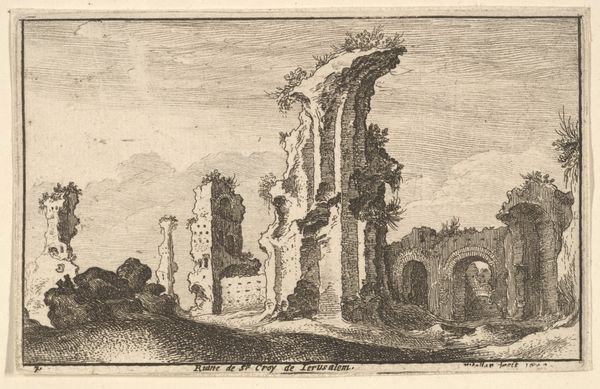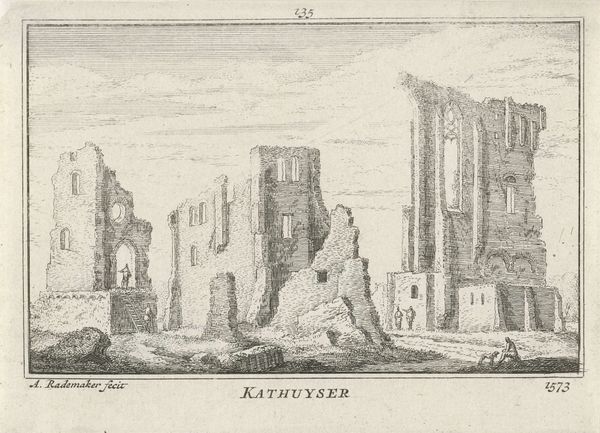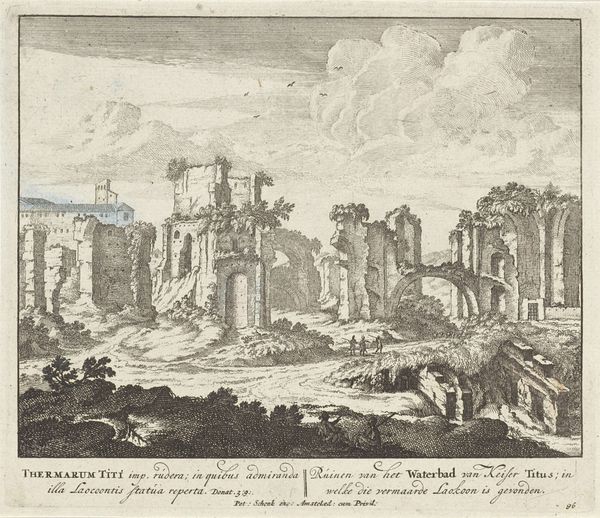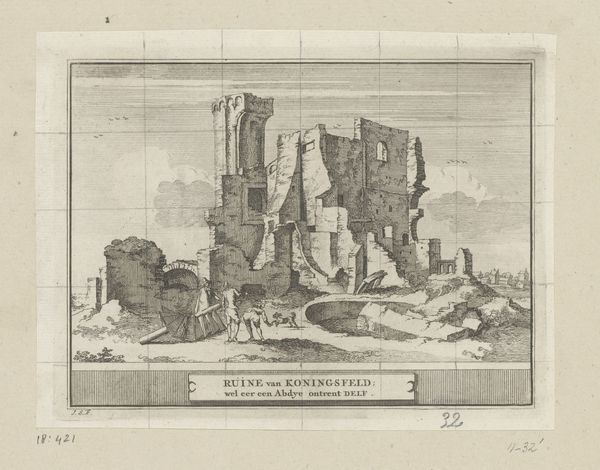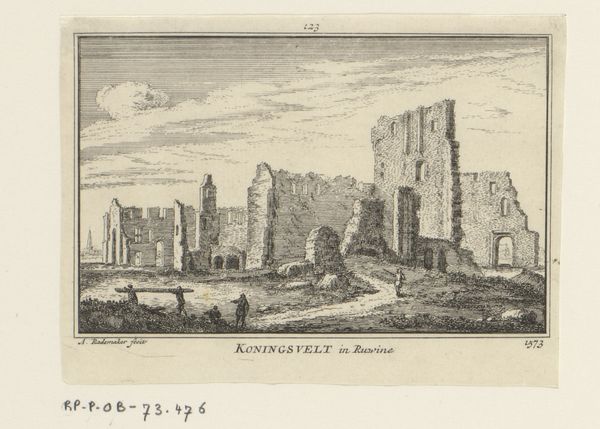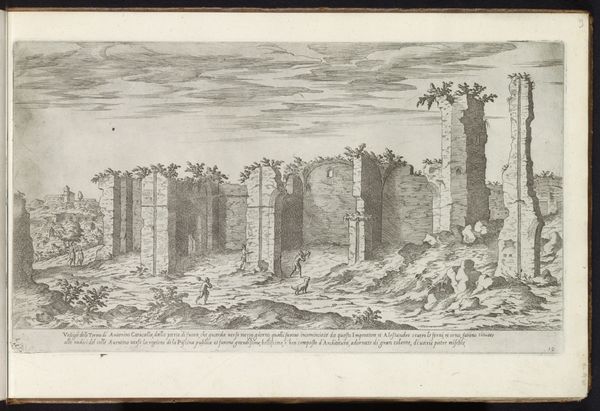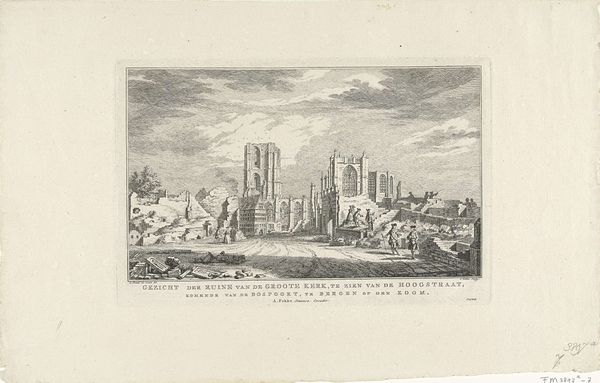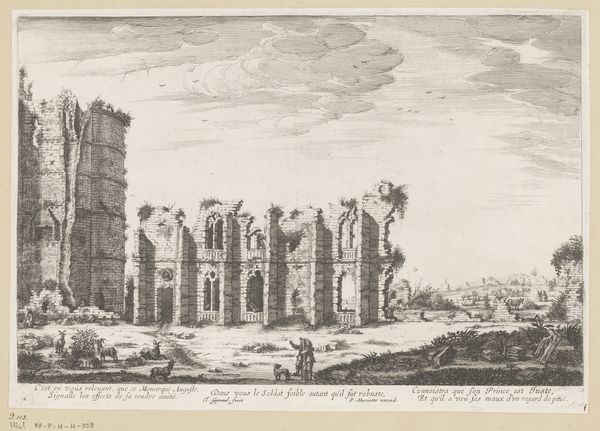
Gezicht op de ruïne van het kartuizerklooster bij Delft, 1573 1725 - 1803
0:00
0:00
Dimensions: height 83 mm, width 112 mm
Copyright: Rijks Museum: Open Domain
Curator: This print captures the ruin of the Carthusian monastery near Delft, dating back to 1573 and rendered here by Abraham Rademaker, likely closer to the late 17th or early 18th century. He worked with etching, a style very typical of the Baroque period. Editor: There's such a sense of melancholy in this depiction. Those crumbling walls, that lone figure sketching in the foreground...it's almost romantic. The barest, stark light illuminates every broken edge. Curator: Indeed. What we see here is not simply a depiction of decay but, for Rademaker’s audience, a potent reminder of religious conflict. The monastery was destroyed during the Eighty Years' War. Editor: The etching style lends itself well to this theme of fragmentation and ruin. Look at the almost scientific detail in capturing the degradation of the stonework. What can you tell us about its original cultural weight? Curator: The Carthusians represented a strict, contemplative order. Its destruction signified the end of an era, the rise of Protestantism, and, of course, Dutch independence. Prints like these helped shape a narrative of national identity. Editor: And even today, we still react to ruins. It seems the ruin, as a visual, will always be symbolic. You have nature reclaiming spaces previously devoted to God. You get new, local folklore emerging. What an etching of such a prominent motif suggests... Curator: Precisely, the power of imagery transcends time. Rademaker capitalizes on this enduring symbolism, contributing to a public memory steeped in loss and resilience. The placement of the lone figure, for example, reminds me of similar symbolic strategies used by Piranesi in his engravings of Roman ruins. Editor: And that artist is still working centuries after the events! Ruins remind us we are always surrounded by cycles of violence and peace. I had forgotten its impact on historical and visual culture. Curator: I find it impressive to see how the same few strategies that visual culture has employed over time, as you indicated, become signifiers of new memories in visual form. Editor: And with its lasting imprint on national identity, it makes Rademaker’s depiction so valuable.
Comments
No comments
Be the first to comment and join the conversation on the ultimate creative platform.
